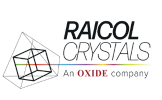
- August 17, 2025
- Quantum
- 0
Author: Ronen Shekel
Medical imaging relentlessly pushes toward higher resolution. Distinguishing features separated by mere micrometers can mean the difference between early disease detection and a missed diagnosis. However, conventional optical coherence tomography (OCT), despite impressive resolution, faces a fundamental tradeoff: as bandwidth broadens to enhance resolution, dispersion in biological tissues increasingly smears the very features we seek to resolve.
Quantum optics offers a remarkable solution. By harnessing entangled photon pairs from specially engineered crystals, we can completely cancel the effect of sample dispersion and achieve twice the axial resolution of classical methods. The key enabler is chirped aperiodically poled KTP (APKTP), which generates the ultra-broadband entangled photons essential for this quantum sensing achievement.
Broadband biphoton generation
High temporal resolution requires a broad frequency spectrum – a fundamental Fourier relationship. For quantum technologies using photon pairs, this means generating photons entangled over vast frequency ranges.
Standard periodically poled crystals (PPKTP) phase match only relatively narrow frequency bands. Chirped APKTP, however, gradually varies the poling period along the crystal length (Fig. 1a), phase-matching different frequencies at distinct positions along the crystal [1-3]. This seamlessly integrates multiple phase-matching conditions into a single crystal, enabling photon pairs to span ultrabroad spectra. Such chirped crystals have demonstrated a bandwidth of 300nm, with record-breaking Hong-Ou-Mandel (HOM) interference of <10 fs width [1], a hallmark of ultrashort temporal correlations [4]. This spectral engineering is invaluable also for advanced quantum imaging [5], spectroscopy [6] and tomography [7] applications.
A different method for broadband biphoton generation is utilizing a natural advantage of KTP: it has a zero group-velocity dispersion wavelength at approximately 1789 nm for light polarized along the crystallographic Z axis of KTP [8,9]. Near this “sweet spot,” the bandwidth of type-0 SPDC is limited only by higher-order dispersion, enabling biphoton spectral widths approaching 1000 nm even without chirped poling.
Classical and quantum OCT
Optical coherence tomography uses broadband light in a low-coherence interferometer to create cross-sectional images of subsurface structures. Light split between reference and sample arms (Fig. 1b) produces interference only when path lengths match within the source’s coherence length, enabling depth profiling with a precision resolution of a few μm in medical applications.
However, OCT faces a practical limitation: group velocity dispersion. Different wavelengths travel at different speeds through materials, smearing pulses and reducing resolution. Consequently, as bandwidth broadens to improve resolution, dispersion increasingly limits OCT’s performance.
Quantum Optical Coherence Tomography (QOCT), proposed in 2002 [10,11], utilizes spectrally entangled photon pairs where one photon probes the sample while its twin serves as a reference (Fig. 1c). This quantum approach provides two remarkable advantages. First, it inherently cancels sample dispersion effects through a local dispersion cancellation effect [12], which we discussed in a previous post. Second, QOCT delivers a factor-of-two improvement in axial resolution: Two-photon quantum interference depends on the paths travelled by both photons, doubling sensitivity to optical delays compared to classical methods.
Since 2002 many advancements have been made in the field of classical OCT, with new ideas such as spectral-domain OCT and swept-source OCT [13], as well as new quantum OCT configurations [7].

Over the last decade domain engineering has undergone significant development [14], and here at Raicol, we advance the available technology by producing advanced crystals like chirped APKTP to translate quantum concepts into reality. Our expertise in periodic and aperiodic poling allows custom crystals optimized for various quantum applications. Through collaborations like the European QuantERA project SPARQL, we’re committed to advancing quantum technologies. Contact us to discuss how our crystal engineering can empower your quantum research and products.
References
[1] Nasr, Magued B., Silvia Carrasco, Bahaa EA Saleh, Alexander V. Sergienko, Malvin C. Teich, Juan P. Torres, Lluis Torner, David S. Hum, and Martin M. Fejer. “Ultrabroadband biphotons generated via chirped quasi-phase-matched optical parametric down-conversion.” Physical review letters 100, no. 18 (2008): 183601.
[2] Brida, Giorgio, M. V. Chekhova, I. P. Degiovanni, M. Genovese, G. Kh Kitaeva, A. Meda, and O. A. Shumilkina. “Chirped biphotons and their compression in optical fibers.” Physical review letters 103, no. 19 (2009): 193602.
[3] Wang, Jinbao, and Haibo Lin. “The single-cycle biphotons generated by noncollinear SPDC in the chirped QPM crystals.” Journal of the European Optical Society-Rapid Publications 20, no. 1 (2024): 6.
[4] Hong, Chong-Ki, Zhe-Yu Ou, and Leonard Mandel. “Measurement of subpicosecond time intervals between two photons by interference.” Physical review letters 59, no. 18 (1987): 2044.
[5] Lemos, Gabriela Barreto, Victoria Borish, Garrett D. Cole, Sven Ramelow, Radek Lapkiewicz, and Anton Zeilinger. “Quantum imaging with undetected photons.” Nature 512, no. 7515 (2014): 409-412.
[6] Kalashnikov, Dmitry A., Anna V. Paterova, Sergei P. Kulik, and Leonid A. Krivitsky. “Infrared spectroscopy with visible light.” Nature Photonics 10, no. 2 (2016): 98-101.
[7] Vanselow, Aron, Paul Kaufmann, Ivan Zorin, Bettina Heise, Helen M. Chrzanowski, and Sven Ramelow. “Frequency-domain optical coherence tomography with undetected mid-infrared photons.” Optica 7, no. 12 (2020): 1729-1736.
[8] Viotti, Anne-Lise. Nonlinear optics in KTiOPO4 for spectral management of ultra-short pulses in the near-and mid-IR. Diss. KTH Royal Institute of Technology, 2019.
[9] https://refractiveindex.info
[10] Abouraddy, Ayman F., Magued B. Nasr, Bahaa EA Saleh, Alexander V. Sergienko, and Malvin C. Teich. “Quantum-optical coherence tomography with dispersion cancellation.” Physical Review A 65, no. 5 (2002): 053817.
[11] Nasr, Magued B., Bahaa EA Saleh, Alexander V. Sergienko, and Malvin C. Teich. “Demonstration of dispersion-canceled quantum-optical coherence tomography.” Physical review letters 91, no. 8 (2003): 083601.
[12] Steinberg, Aephraim M., Paul G. Kwiat, and Raymond Y. Chiao. “Dispersion cancellation and high-resolution time measurements in a fourth-order optical interferometer.” Physical Review A 45, no. 9 (1992): 6659.
[13] Ge, Xin, Shufen Chen, Si Chen, and Linbo Liu. “High resolution optical coherence tomography.” Journal of Lightwave Technology 39, no. 12 (2021): 3824-3835.
[14] Weiss, Tim F., and Alberto Peruzzo. “Nonlinear domain engineering for quantum technologies.” Applied Physics Reviews 12, no. 1 (2025).
Raicol
Rosh Ha’Ayin 4809162, Israel

